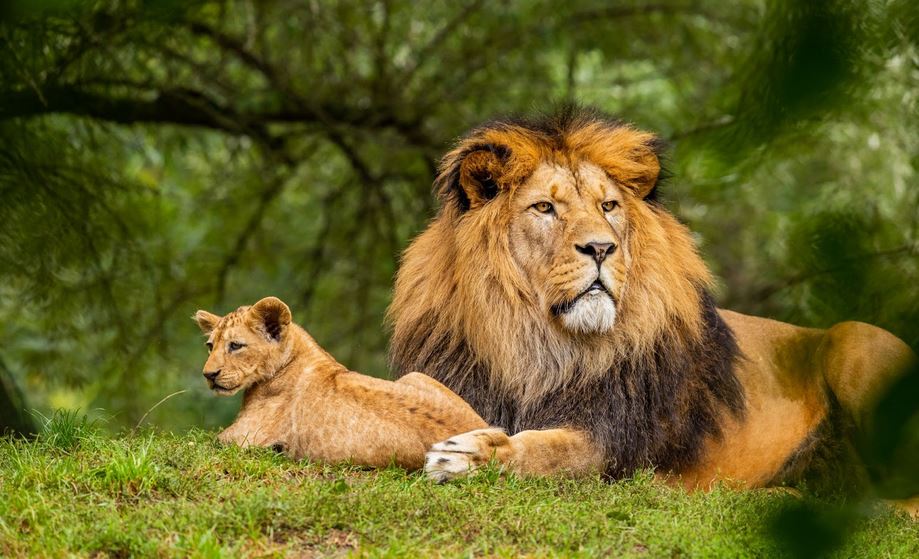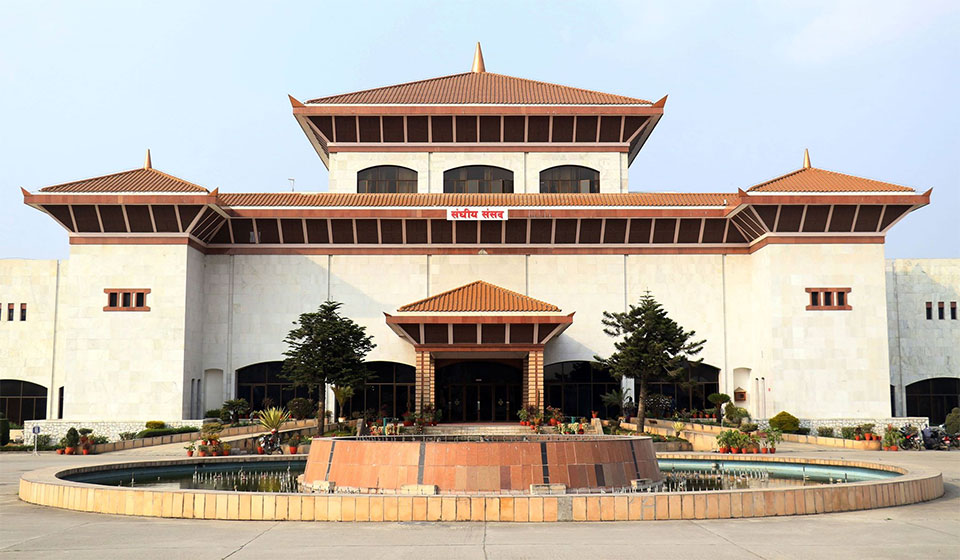
OR
World Lion Day
Roaring Majesty: Unraveling the Epic Saga of Lions and their Fight for Survival
Published On: August 10, 2023 09:15 AM NPT By: Assaf Levy


Assaf Levy
The author is the Founder & CEO of BioDB.com - a group tasked with collecting conservation data, raising awareness for biodiversity loss and fundraising.news@myrepublica.com
In the heart of the African jungles, the mighty ‘Simba’ reigns as the king! Lions have fascinated humans for centuries with their social structure and impressive manes. In a land where legends roam, where the circle of life is incomplete without them and their roar echoes through time, there is a tale of struggle and survival, untold and unseen. These magnificent big cats face challenges that threaten their existence. Ever wondered what can make mighty lions vulnerable? In this article, we'll explore the captivating world of lions, including conservation efforts, population dynamics, and the latest research that uncovers the lesser known truths.
Endangered Pride
Lions once roamed throughout Africa, Asia, and Europe, but now they are only found in fragments of sub-Saharan Africa, with a subpopulation in West Africa and a small population of Asiatic lions in India's Gir National Park. Tanzania is home to three of the five largest lion populations, and the vast majority of lions live south of the Sahara. Lions are adaptable big cats that can survive in various habitats, including dry forests, thick bushes, floodplains, and semi-arid desert areas. However, they prefer open savannas, where it is easier to stalk their prey. According to the International Union for Conservation of Nature (IUCN), there are an estimated 23,000 to 39,000 lions remaining in the wild. Recent data suggest that number may be closer to 20,000 as three-quarters of their population is declining. While lions are currently classified as vulnerable, their population is expected to decline even further without adequate conservation efforts.
Today, lions are constantly under threat, most of which are brought on by human activity. Ranchers, for instance, often fear that lions will prey on their livestock, which can be a significant financial blow. To prevent this, they may resort to killing the animals in retaliation and as a preventative measure. In some cases, they even use pesticides as poison, lions’ scavenging behavior makes them vulnerable to such poisoned carcasses.
Conversely, poachers target the species for their bones and other body parts, which are highly valued in the illegal wildlife trade. The role that trophy hunting plays in this conflict is highly controversial. While some argue that hunting fees generate money for lion conservation efforts, others point out that mismanaged hunting in the past has caused lions to disappear from certain habitats. The "vacuum effect" created by the targeted killing of adult males further exacerbates the issue, flagging practice even more unscientific.
Photo credits to hippopx, “lion, young, cub, lioness, mother, nature, young animal”, used under CC0 license
Making matters worse is the loss of prey across the species' range. African lions rely heavily on large herbivores for sustenance, but these populations are being hunted to extinction for the increasingly commercial bushmeat trade. In East Africa, for example, these populations have declined by as much as 52%, while in West Africa, the decline has been even more dramatic at 85%. With fewer food options available in the wild, lions may be more likely to turn to hunt domesticated animals like livestock, further fueling the conflict between humans and lions.
Lions have a relatively slow reproductive rate compared to other species. Lionesses give birth to small litters of cubs, and the survival rate of cubs to adulthood is relatively low. Half of the cubs can not reach even the age of one. This slow reproductive rate makes it challenging for lion populations to recover, even with conservation efforts.
The Asiatic Lion
The Asiatic lion, which is native to the Gir region of India, is a genetically distinct subspecies different from the lions found in sub-Saharan Africa. The Gir is home to dry deciduous teak forests. Unfortunately, the vast forest that once covered over 2,600 km² in the early 1900s has suffered significant depletion, and is now less than half the size it once was. The Gujarat State Forest Department's forestry operations, which allow for the logging of forest trees and the planting of teak in previously cleared areas, have led to the predominance of teak forests.
The Gir National Park and Wildlife Sanctuary's protective boundaries currently house the majority of the remaining forest that is being conserved. The Asiatic lion only exists as a single subpopulation, and hence is susceptible to catastrophic occurrences like epidemics or forest fires, which may push them to the verge of extinction.
Creating a new home for Asiatic lions in their old territory (former range) is crucial, to ensure their safety, genetic diversity, and ecological balance. Past attempts faced challenges, like a lion group introduced in Chandraprabha Wildlife Sanctuary, UP grew in number, but then disappeared, possibly due to poisoning or poaching, resulting in failure of the project.
As part of ongoing conservation efforts, other wildlife sanctuaries are now being considered as potential locations for this crucial mission.
Towards Conservation Journey
Conservation efforts for lions involve a grand quest of balance between preserving their natural habitats, minimizing human-wildlife conflicts, and managing sustainable populations. One successful initiative has been the establishment of protected areas and national parks, which offer safe havens for lions to thrive. Countries like Kenya, Tanzania, and South Africa have made strides in creating these protected spaces, allowing lions to maintain stable populations.
However, despite these efforts, some challenges persist. One issue is the encroachment of human settlements into lion habitats. As the human population expands, it brings humans and lions into closer proximity, leading to increased conflicts and potential loss of livestock, which can provoke retaliatory killings of lions by local communities. Resolving this issue requires collaboration between conservation organizations, governments, and local communities to develop sustainable practices that benefit both people and wildlife.
Understanding population dynamics is also crucial for effective lion conservation. Over the past few decades, lion populations have experienced fluctuations due to various factors. According to a study conducted by the Lion Recovery Fund, there has been a noticeable decline in lion populations in certain regions, such as West Africa, where they are now classified as "Critically Endangered." In contrast, populations in Southern Africa have shown more stability, and some even experienced modest growth, which can be partially attributed to successful conservation efforts and more suitable habitats for the big cats. This region has seen an increase in wildlife tourism, which generates income for local communities, incentivizing them to protect lions and their habitats.
To effectively protect lions and ensure their long-term survival, it is crucial to address threats and implement comprehensive conservation strategies that involve local communities, governments, and international organizations. Saving lions is a race against time due to the various threats they face in their shrinking habitats, the combination of various adverse factors has led to an overall faster rate of loss of lions than the rate of their recovery.
Crucial Role of Research
Scientific research plays a pivotal role in understanding lion behavior, biology, and their interactions with the environment. Conservationists and researchers have been employing various methods, including radio telemetry, satellite tracking, and genetic analysis, to gather valuable data on lion populations.
Recent research has shed light on the genetic diversity of lion populations, which is crucial for their long-term survival. It has been discovered that some populations have become genetically isolated, leading to reduced genetic variation. This poses a risk of inbreeding depression, making these isolated populations more susceptible to diseases and environmental changes.
Furthermore, behavioral studies have highlighted the importance of pride dynamics and the roles of different members within a pride. For example, lionesses are the primary hunters, while male lions protect the pride and its territory. Understanding these dynamics helps conservationists implement targeted strategies for protecting different aspects of lion society.
Lions are majestic and powerful creatures, conservationists such as BioDB, governments, researchers, and communities are working together to protect them and their habitat. Indeed, the future of lions is a race against time, and it rests upon humanity's shoulders. Together, we can make sure that their mighty roar continues to echo across the globe, a symbol of nature's untamed spirit and everlasting royalty.
"Lions remind us that we share this planet with other magnificent beings who deserve their rightful place in the circle of life. Conservation is our way of ensuring they continue to roar in the wild." - Richard Leakey
You May Like This

Rolpa schools struggling in lack of funds
ROLPA, May 8: Even though the government has pledged free education up to the secondary level as child's fundamental right in... Read More...

Fringe parties' survival at stake with rise in political opportunism
KATHMANDU, June 23: As big parties with opposing ideologies court each other for electoral gains, many have started wondering whether smaller... Read More...

Daredevils beat Lions after final-over IPL thriller
KANPUR, May 11:Delhi Daredevils pulled off a successful run chase against Gujarat Lions to win by two wickets with two... Read More...




Just In
- Nepali man fighting alongside Russian army in Ukraine: "They are killing me, save me!"
- Parties agree to form parliamentary probe committee to investigate cooperative fraud case
- Foreign investment commitments reach Rs 53 billion in 10 months, Rs 2.15 billion approved via automated system
- Prithvi Highway Expansion: Deadline extended by five months on eastern section from Jamun to Ambukhaireni
- Nepal’s outbound spending surpasses inbound revenue
- Cricketer Lamichhane gears up preparation for T20 World Cup
- Japan's parliament passes bill to allow joint custody for divorced parents
- 372 drug peddlers arrested in Jhapa in 10 months














Leave A Comment